Unlocking the Secrets to Beautiful Type 3C Hair
Bouncy. Springy and voluminous! Lets face it, Type 3C hair doesn't need an introduction!
Whether you're already experienced with curly hair care or just beginning your journey, discovering your unique hair type is an important step looking after your curls.
Identifying your hair's curl ‘type’ allows for a deeper understanding of its unique characteristics, such as porosity, density and texture.
Known for its tight curls and volume, 3C is the curliest of all the Type 3 hair types. There are three variations within each type: 3A, 3B, and 3C. Each subtype is distinct and knowing these differences when crafting your hair care routine will help you get the very best out of your curls
Type 3C hair is known for its tightly coiled, corkscrew-like curls, differing significantly from the other subtypes in this category.
💡 Not sure if Type 3 hair is your exact match? Or want to know which products are best for your unique hair type? Take our Hair Quiz to find out! Answer a few quick questions and get personalised recommendations tailored to your hair’s needs.
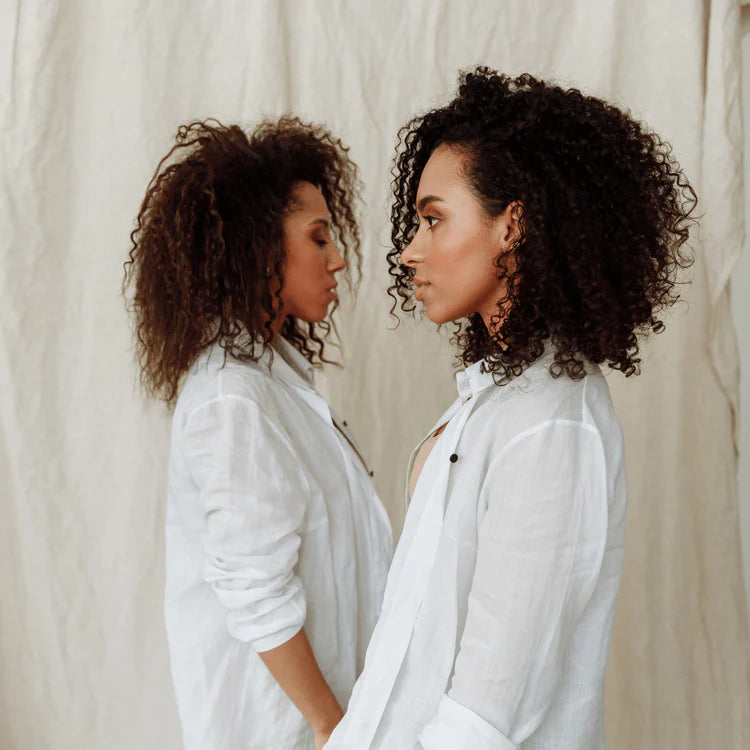
What Exactly is Type 3C Hair?
Characterised by tightly coiled curls that are closely packed together this structure gives rise to significant volume and texture. The curls in 3C hair typically resemble a corkscrew pattern, which is much denser and coarser compared to Type 3A Hair and Type 3B Hair.
Due to its coarser texture, 3C hair often requires different care routines than finer or looser curl types.
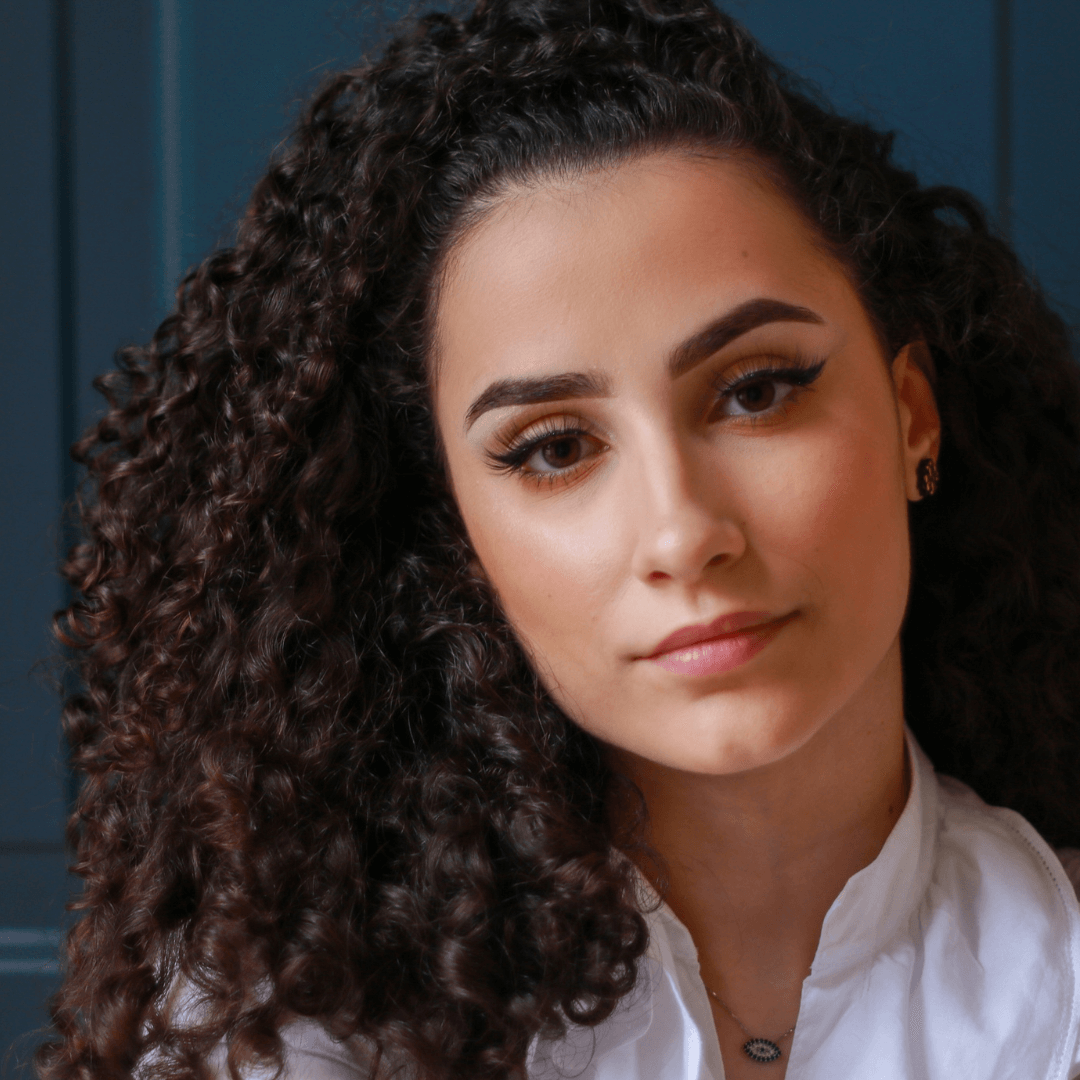
Identifying 3C Curly Hair
If you’re thinking you might have type 3C hair, then you’re most likely going to have some or all of the following features:
-A distinct S-shaped Pattern
-Tight, corkscrew spirals
-A thicker texture
-Voluminous & prone to frizz
Distinction from Other Type 3 Hair
Type 3C Curls are larger in diameter than Type 4A but smaller and tighter than Type 3B. It's not uncommon for most people to have multiple curl patterns, and often 3C hair can be mistaken for either 4A or 3B.
Confusion with Type 4A: While similar to Type 4A in tightness, 3C curls are somewhat looser and have a more defined S-pattern.
Tighter Curl Pattern: Compared to 3A and 3B, Type 3C has a tighter curl pattern.
Higher Density: This hair type is typically denser, contributing to its voluminous appearance.
Hydration Needs: Due to its texture, 3C hair often requires more intense hydration and moisture-retaining routines.
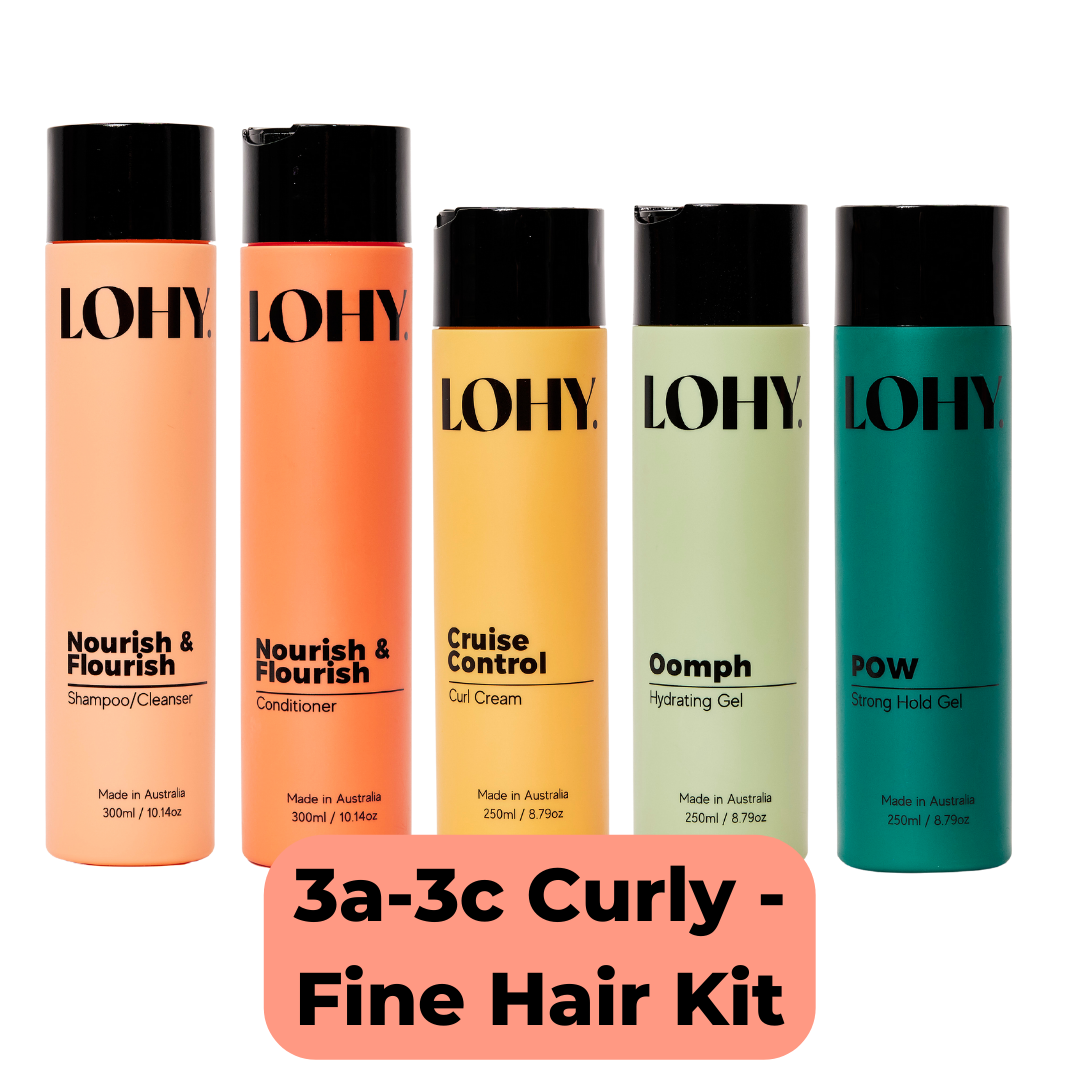
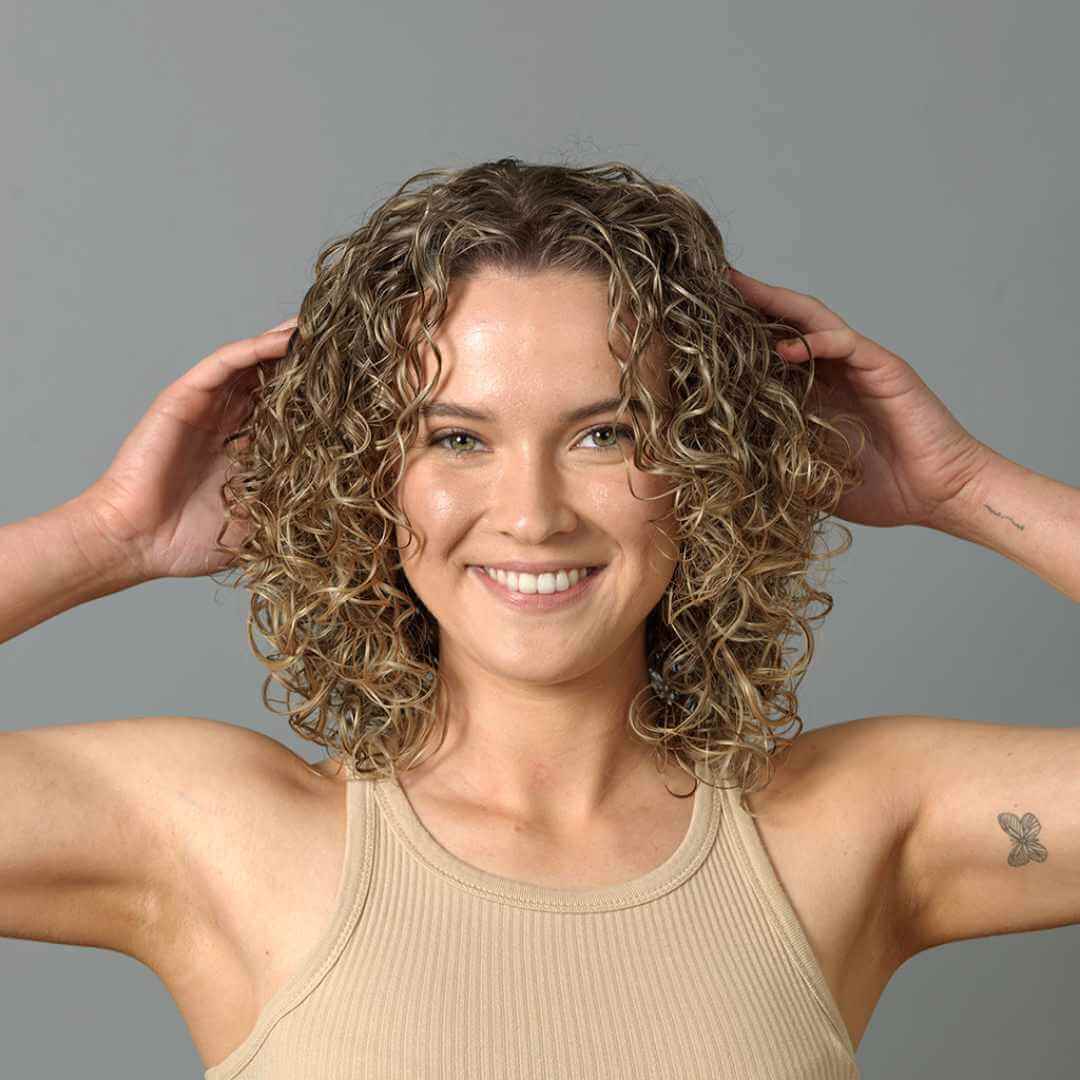
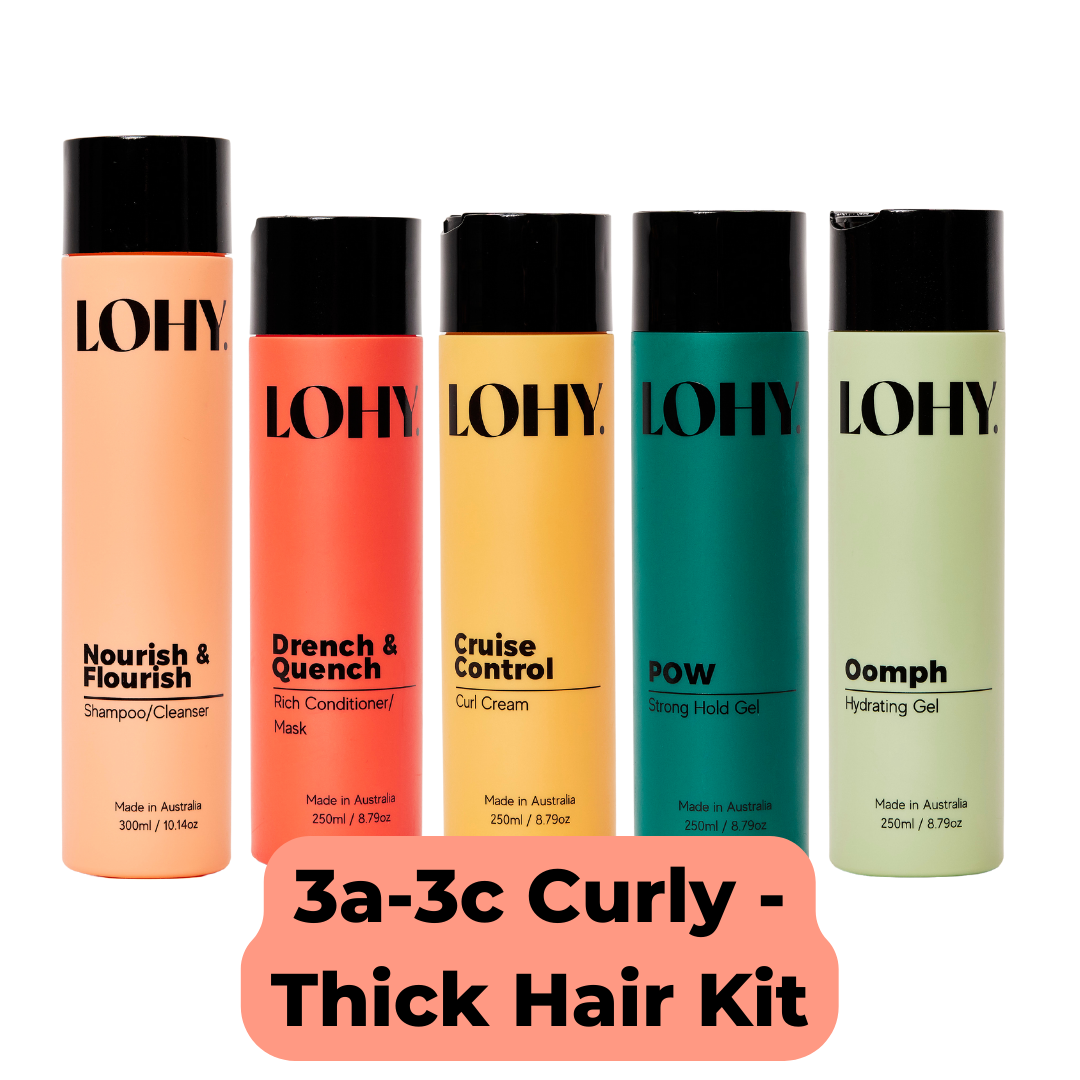
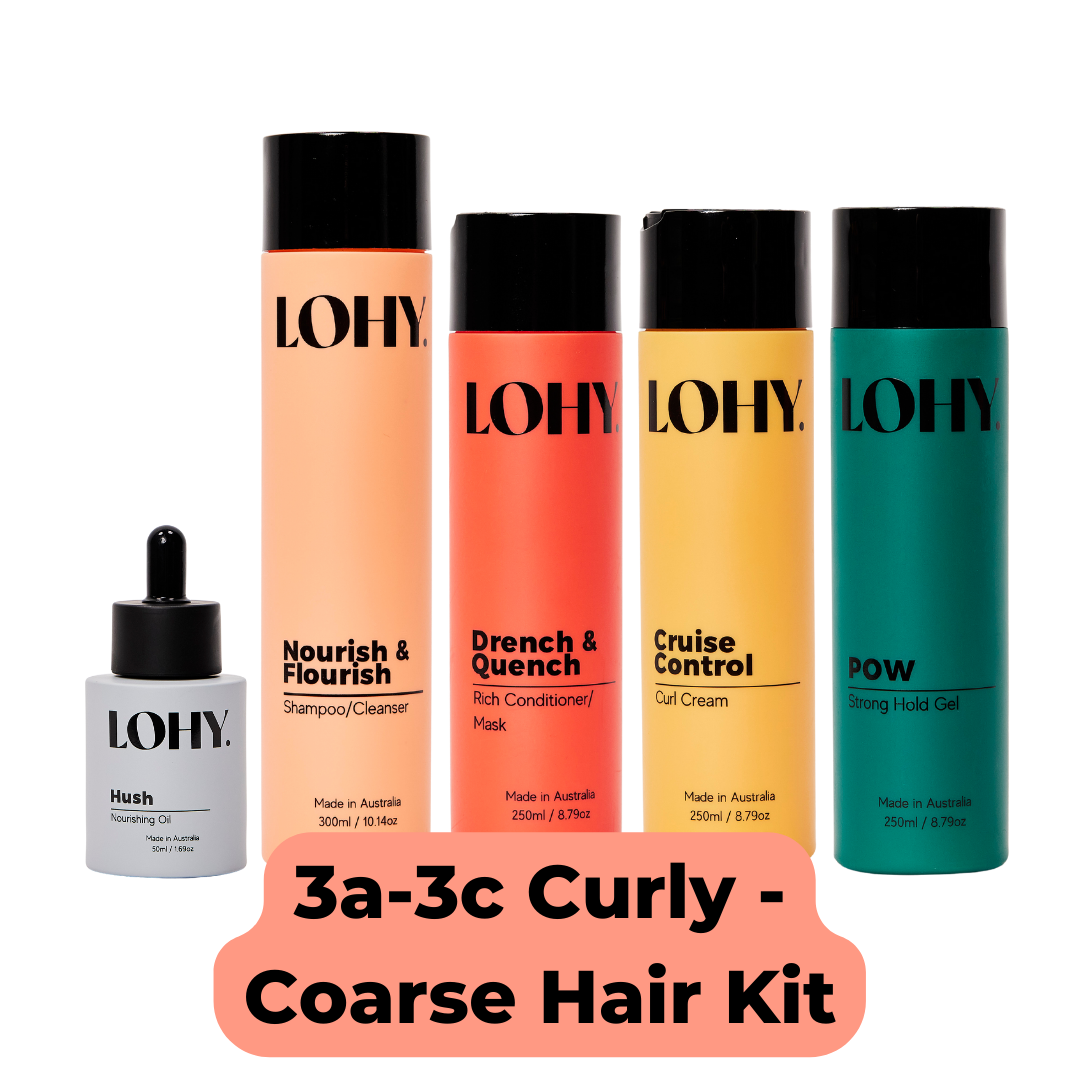
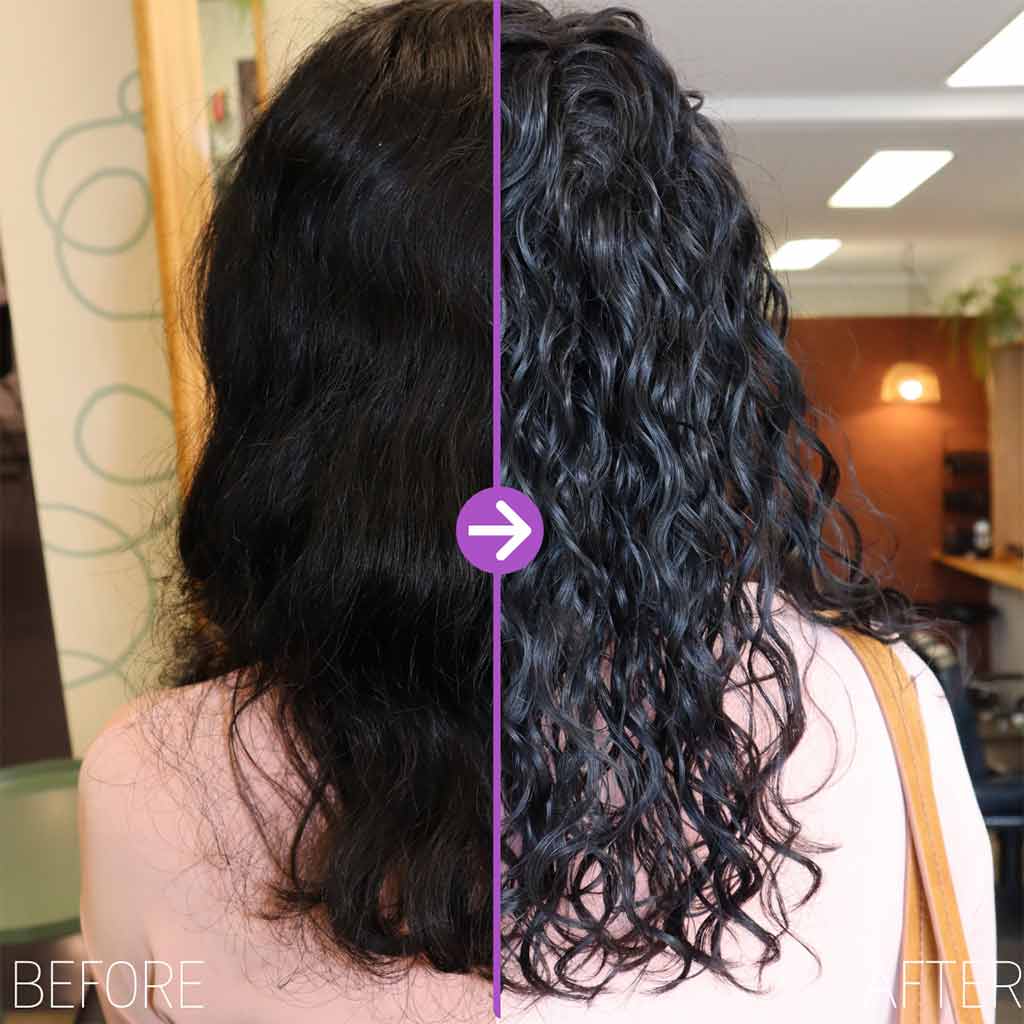
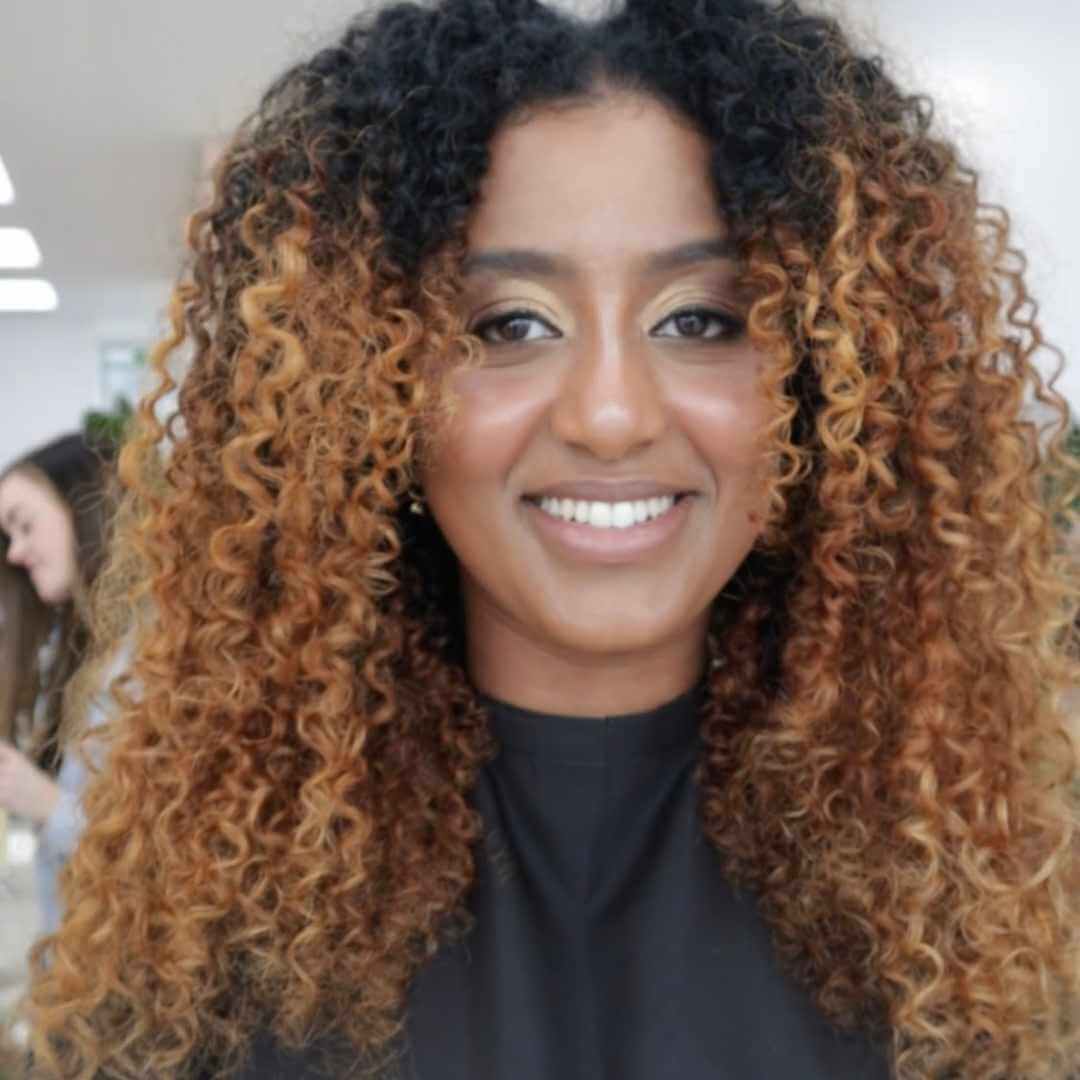
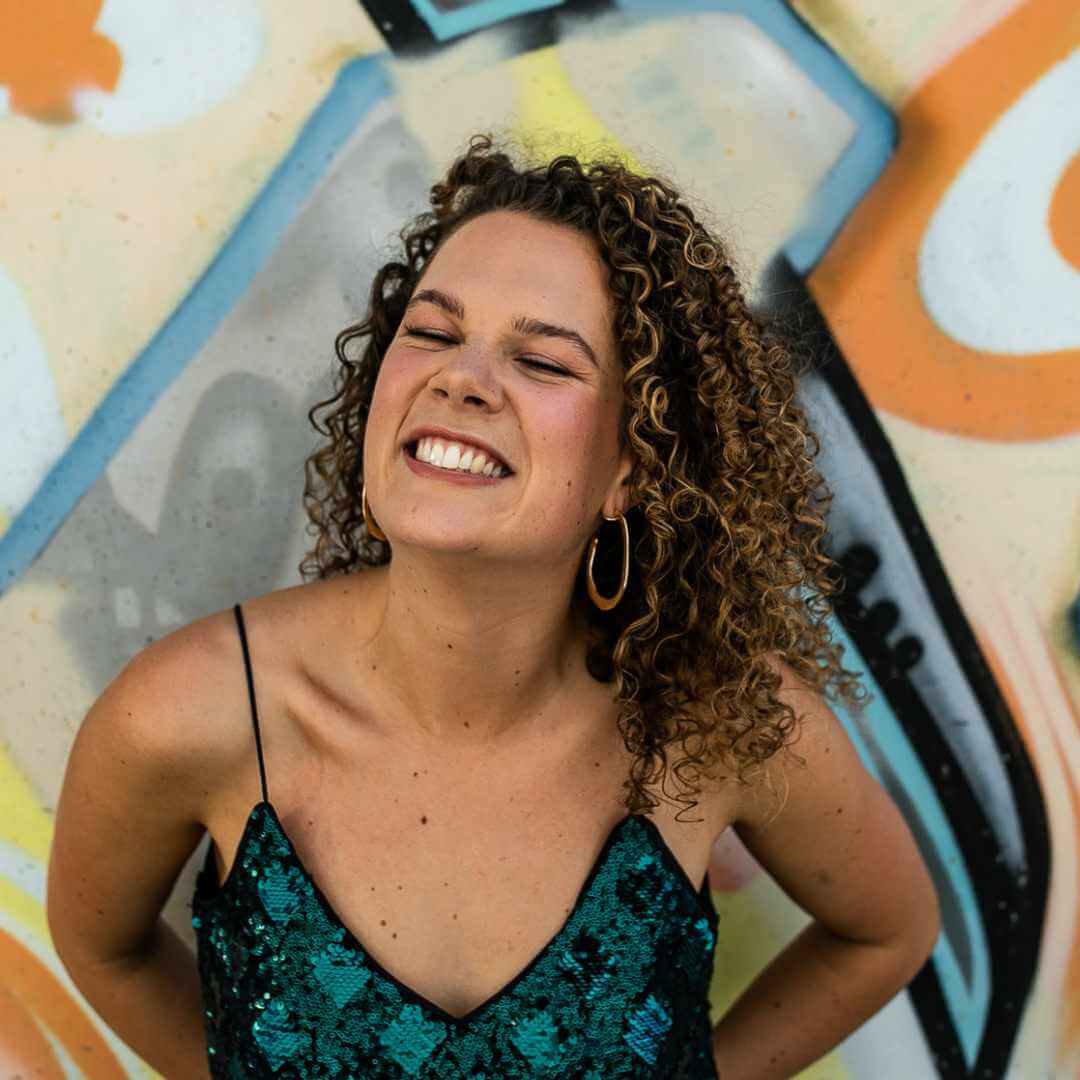


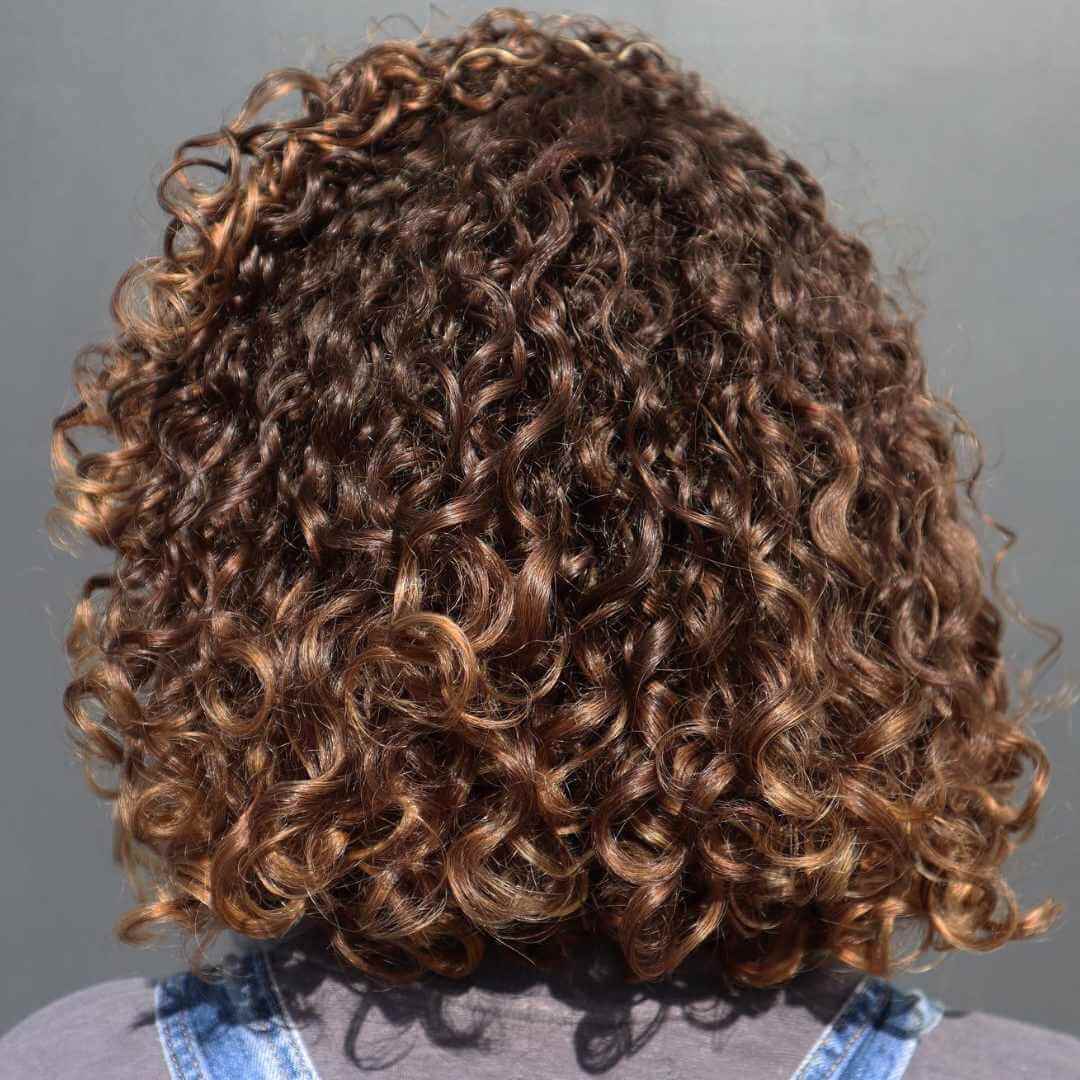
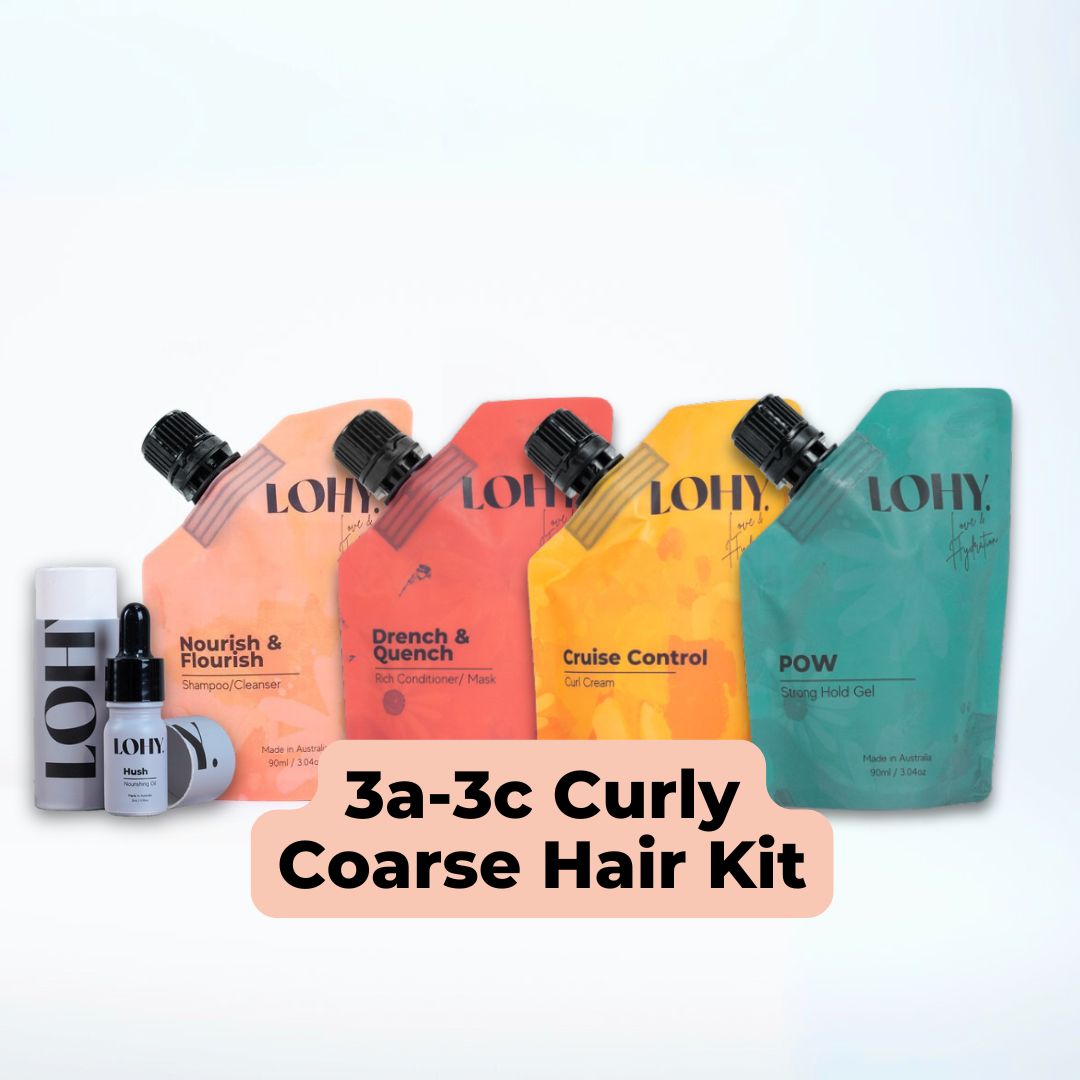
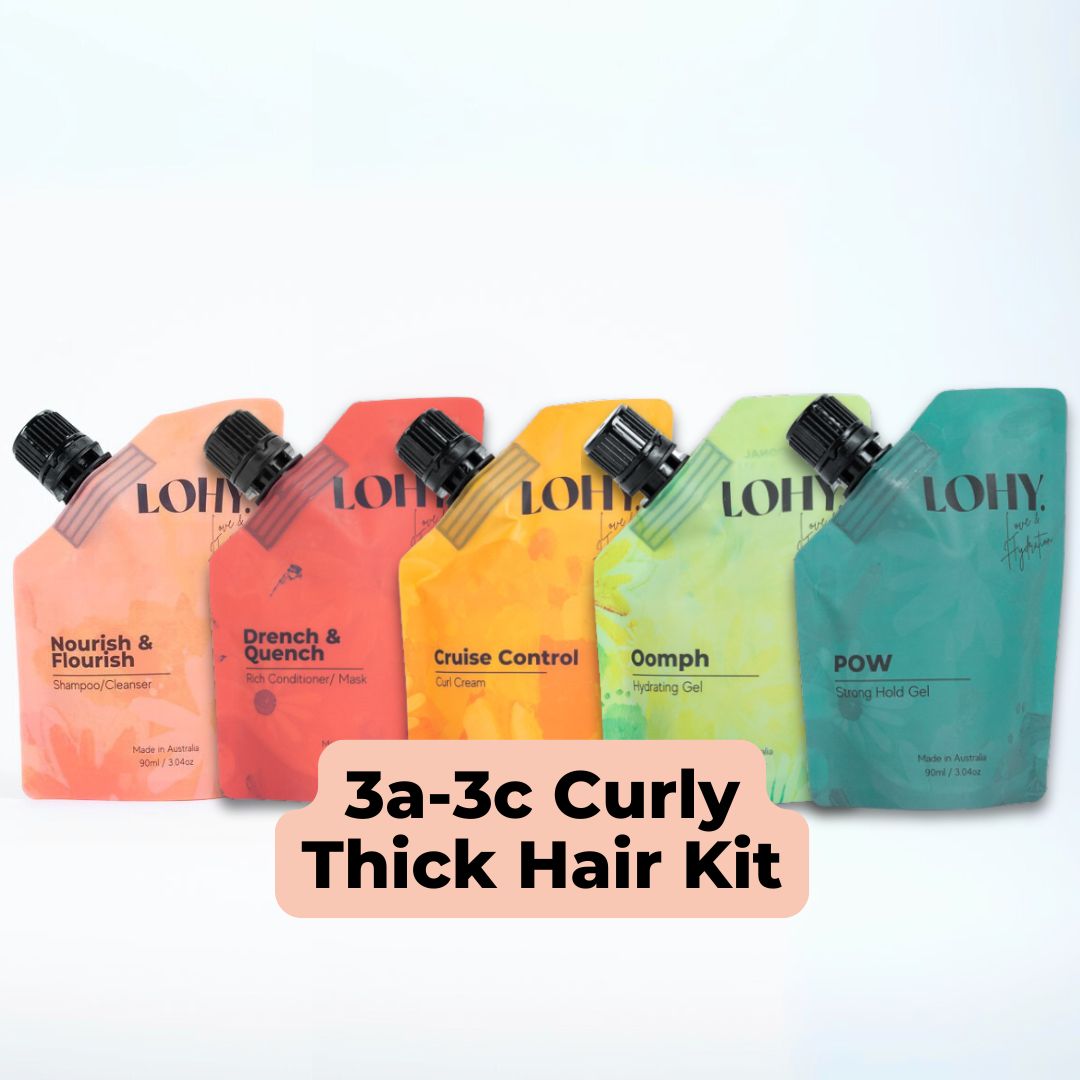
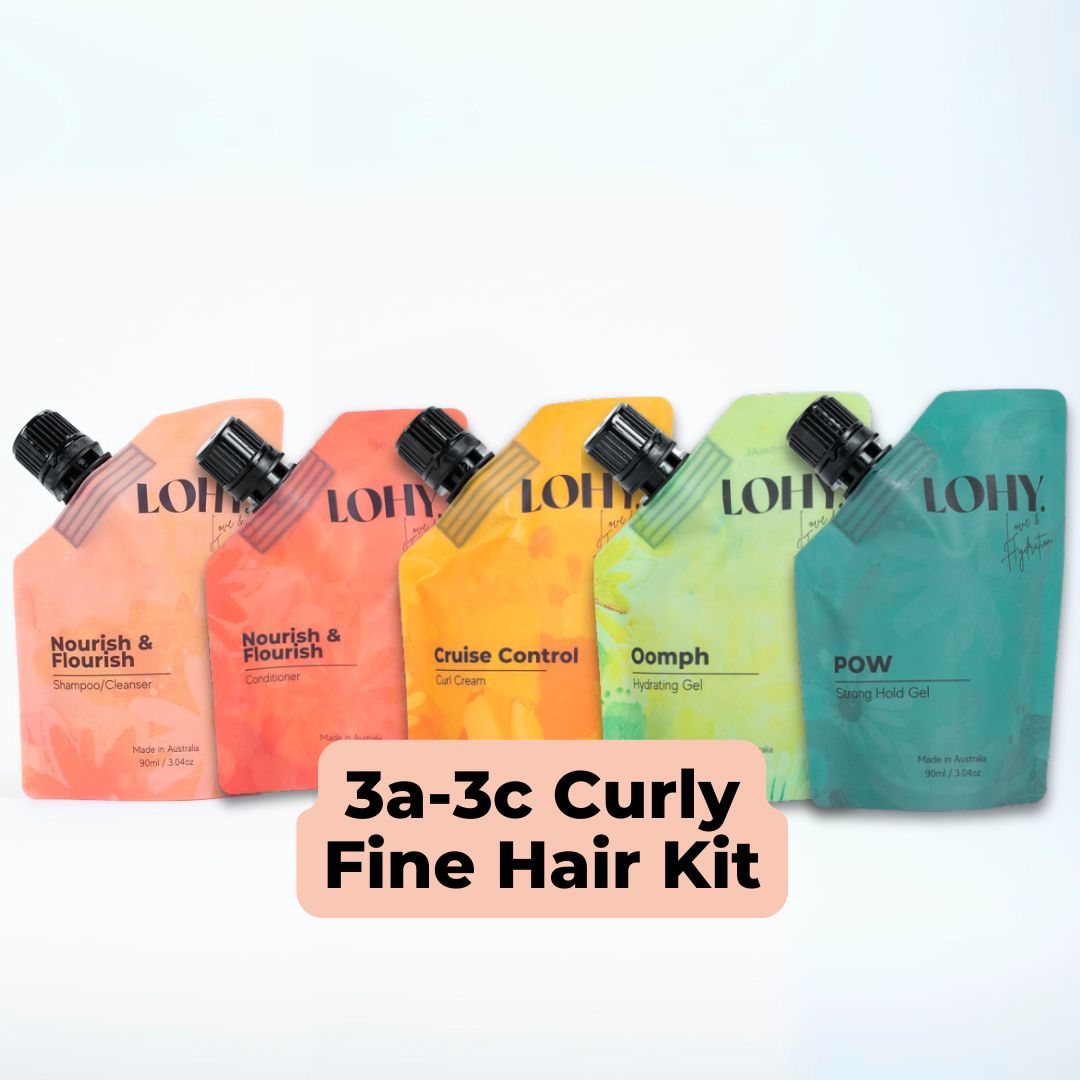
3a, 3b, 3c - Curly Hair Kit
Care and Maintenance Tips
Caring for Type 3C hair is a delicate balance that focuses on maintaining its unique texture and health. Hydration is paramount; regular deep conditioning sessions are essential to keep the hair moisturised and healthy.
When it comes to handling your curls, it's important to be gentle. Avoid using harsh brushes or combs as these can cause breakage and frizz, instead grab your Flexi Brush (designed specifically for curly hair) and leave in moisturiser. Instead, detangle your hair with a wide-toothed comb or your fingers, ideally when it's wet and conditioned to minimise damage.
Choosing styling products that compliment your hair type is really important. Select styling products that provide adequate moisture without weighing down your curls. Protective hairstyles can be a game-changer for Type 3C hair, as they safeguard the ends from damage and reduce the need for frequent manipulation.
Regular trims are essential to maintain the health of your hair, as they help in getting rid of split ends and promote overall hair health.
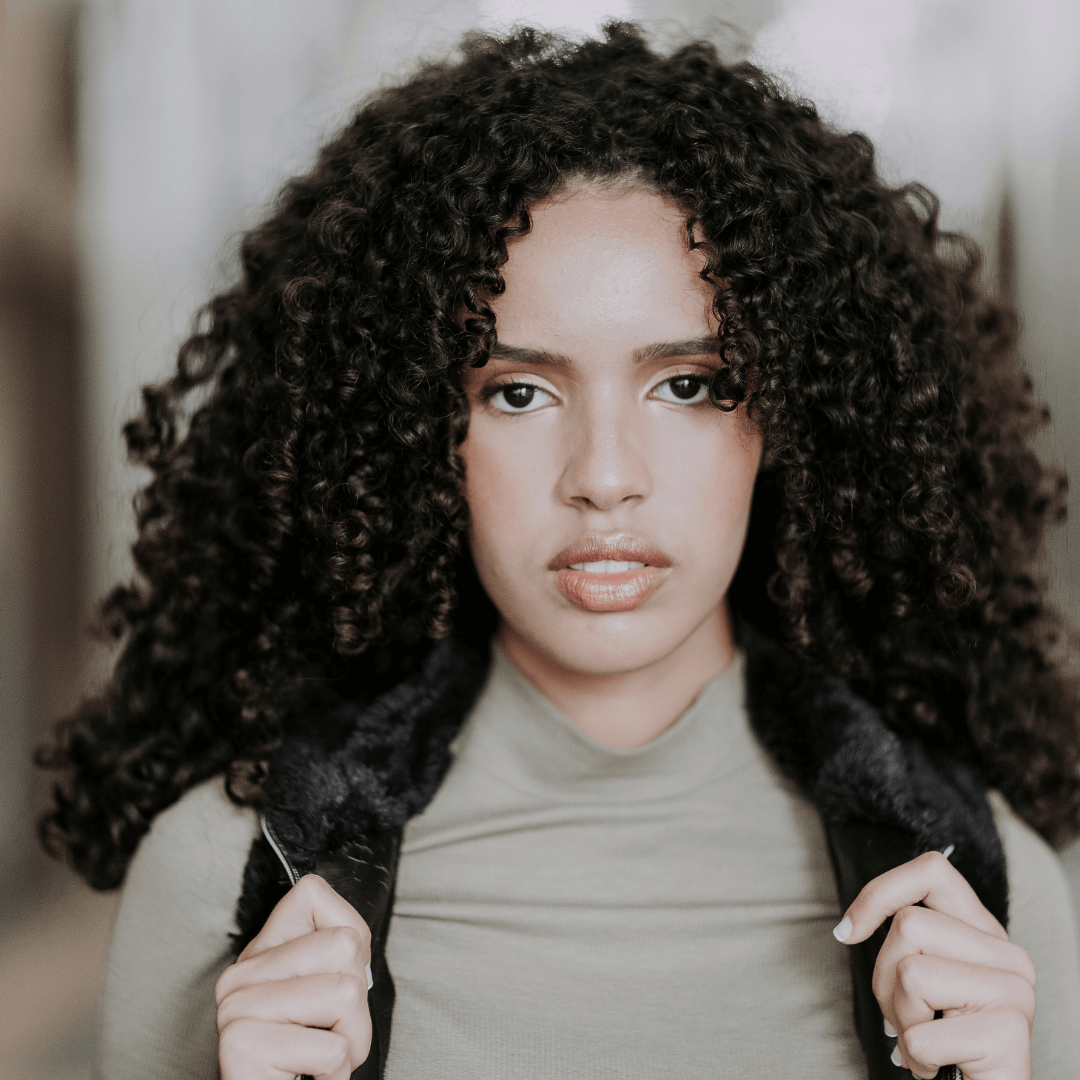
Styling Type 3C Hair
- Defining Curls: Use curl-defining products to enhance the natural curl pattern. We recommend using Cruise Control Curl Cream as a primer for your curls, and Pow strong hold gel for definition.
- Avoiding Heat: Minimise the use of heat styling tools to prevent damage.
- Natural Styles: Experiment with natural styles that showcase your hair's volume and texture.
Creating a styling routine for Type 3C hair that includes the use of LOHY's hydrating products can enhance the health and appearance of your curls.
Here's a step-by-step styling guide:
Step 1: Cleansing and Conditioning
Start with a Gentle Cleanse: Use Nourish & Flourish shampoo to cleanse your scalp and hair without stripping away natural oils.
Deep Conditioning: Apply a liberal amount of Drench & Quench Hydrating Conditioner to your hair. Leave it in for 30 minutes - 2 hours to allow your hair to absorb the hydration. For more enhanced results you can leave the conditioner overnight.
Step 2: Applying LOHY's Products
Prime the hair
Start with Cruise Control, This step is crucial for adding moisture to your hair and priming it for styling products. (For a more relaxed curl, you can use cruise control as your main styling product- just use a little more than you would for priming and follow the styling steps below).
All Day Hold
For a strong all day hold, use either Oomph or Pow Gel. These gels are designed to coat the hair shaft and give a really firm hold. create.
Use Oil To Scrunch Out The Cast
Once the hair is completely dry, use the ‘scrunch-out-the-crunch’ method to get rid of the crispy cast that gel can leave. Using LOHY’s Nourishing Oil, not only leaves the hair feeling soft, it continues to hydrate any dry ends.

Step 3: Detangling
While your hair is still wet, use your Flexi Brush (if you don't have one of these a wide-toothed comb or your fingers will do) to gently detangle your curls. Start from the ends and work your way up to the roots.
Step 4: Styling Tips
1. If you desire more definition, use a curl defining gel - POW, or a hair mousse, we recommend Chutzpah Volumising Foam.
2. Apply it to small sections of your hair, scrunching upwards to encourage curl formation.
3. Allow your hair to air dry or use a diffuser on a low heat setting to dry your curls without causing frizz.
Step 5: Maintenance
Nighttime Care
Before sleep, consider putting your hair in a pineapple bun or cover it with a satin bonnet to reduce frizz and maintain the curl pattern overnight.
Refresh
In between washes, refresh your curls with a spritz of water or a lightweight product like cruise control. Wetting your hair down will reactivate your products, so avoid adding more unless you absolutely need to.
Step 6: Regular Trimming
Regularly trim your ends to prevent split ends and maintain the health of your hair. Pro-tip: Always look for a stylist that understands how to cut curly hair
How To Test The Porosity Of Your Type 3C Hair
The Strand Test is a simple yet effective way to determine the porosity of your hair, which in turn can greatly influence your hair care routine.
To perform this test: you need to place a single strand of clean, product-free hair in a bowl of room temperature water and observe how it behaves.
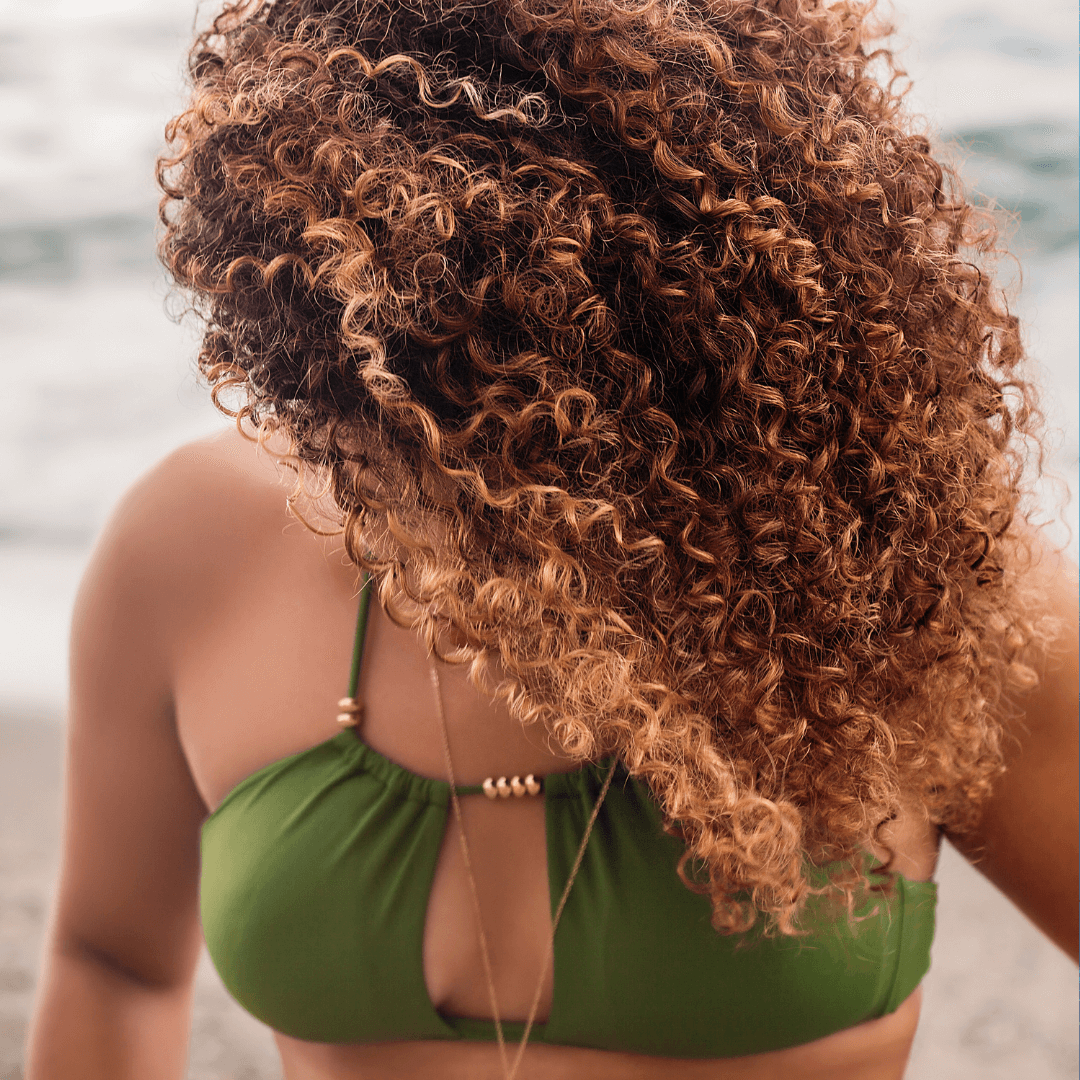
Texture of 3C Hair
The texture of Type 3C hair can vary, affecting how it reacts to products and styling:
Fine Texture: Hair strands are thin and may lack volume.
Medium Texture: Provides a balance between strength and volume.
Coarse Texture: Thicker strands that can be quite resilient but may require more moisture.
Typically, Type 3C hair falls into the medium to coarse category. The strands are relatively thicker and more robust compared to fine-textured hair. This characteristic often necessitates more intense hydration and moisture-retaining products.
Caring for medium to coarse hair isn't hard with a little know-how. For this texture, use products that provide adequate moisture without weighing the hair down. Deep conditioning treatments may be beneficial. Additionally, since the hair is thicker, it might require more gentle detangling to prevent breakage and damage.
By understanding the porosity type and texture of your Type 3C hair, you can plan your hair care routine to best suit its needs, leading to healthier, more manageable curls.
Caring for Your 3C Hair
Step-by-Step Guide: Washing Your Type 3C Hair
Caring for your Type 3B curls properly begins with the right washing routine. LOHY's Nourish & Flourish Shampoo, Drench & Quench Conditioner are designed to gently cleanse and hydrate your curls.

Here's how to use these products for the best results:
Step 1: Preparing Your Hair
- Before applying any product, gently detangle your hair. You can do this with your Flexi Brush, a wide-tooth comb or your fingers. This reduces breakage and ensures even distribution of the shampoo.
Step 2: Wetting Your Hair
- Rinse your hair thoroughly with lukewarm water. Warm water helps to open the hair’s cuticles, allowing the shampoo to cleanse more effectively.
Step 3: Applying Shampoo
- Apply a small amount of Nourish & Flourish Shampoo to your scalp. The amount depends on the length and thickness of your hair, but generally, a coin-sized amount is sufficient.
- Using your fingertips, gently massage the shampoo into your scalp in circular motions. This helps to lift dirt and oil without roughing up the hair’s cuticle.
Step 4: Rinsing the Shampoo
- Thoroughly rinse your hair, ensuring all the shampoo is washed out. This is crucial as any residue can lead to build-up and make your hair look dull.
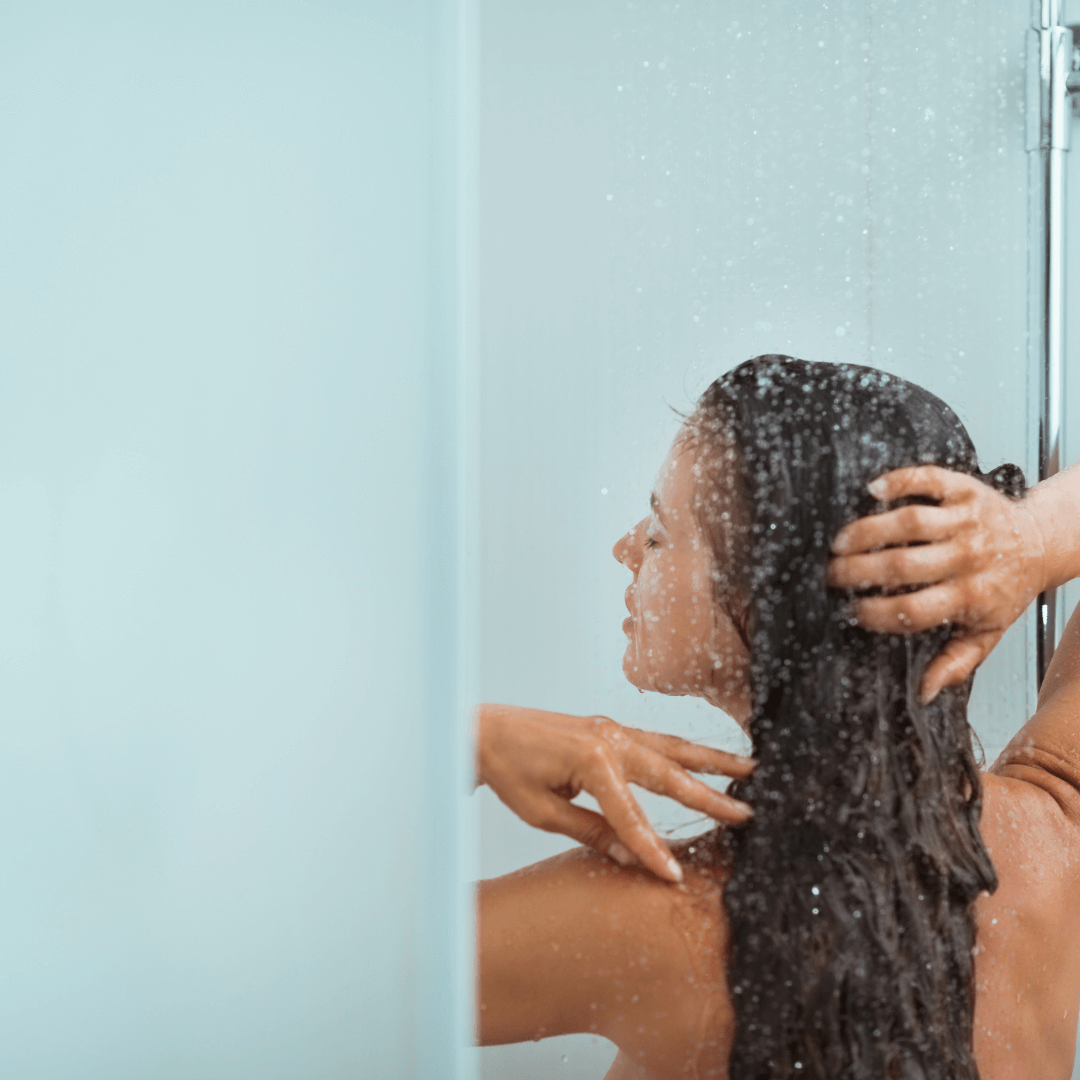
Conditioning Your Type 3C Hair
Step 5: Applying Drench & Quench Conditioner
- Squeeze out excess water from your hair. Then apply Nourish & Flourish Conditioner, focusing on the mid-lengths and ends of your hair. These areas need the most moisture.
- Use your Flexi Bruch, fingers or a wide-tooth comb to distribute the conditioner evenly. This also helps with detangling.
Step 6: Let the Conditioner Sit
- Allow the conditioner to sit on your hair for a few minutes. This gives your hair time to absorb the moisture and nutrients from the conditioner.
Step 7: Final Rinse
- Rinse your hair with cool water. The cool temperature helps to close the cuticles, sealing in moisture, enhancing shine, and reducing frizz.
Step 8: Drying Your Hair
- After washing, gently squeeze out the water from your hair. Avoid rubbing your hair with a towel as this can cause frizz and breakage. Instead, use a microfiber towel or an old t-shirt to gently blot and absorb excess water.
Pro-tip: Squeezing your hair while tipping from side-to-side will help create curl clumps.
Step 9: Styling
- Apply Cruise Control Curl Cream and your preferred styling products to your damp hair. Then style as usual, whether air-drying or using a diffuser on a low heat setting.
By following these steps, you can ensure that your Type 3C hair is cleansed and conditioned effectively, leaving your curls hydrated, defined, and healthy. Remember, the key to great curls is being gentle and taking the time to properly nourish your hair.
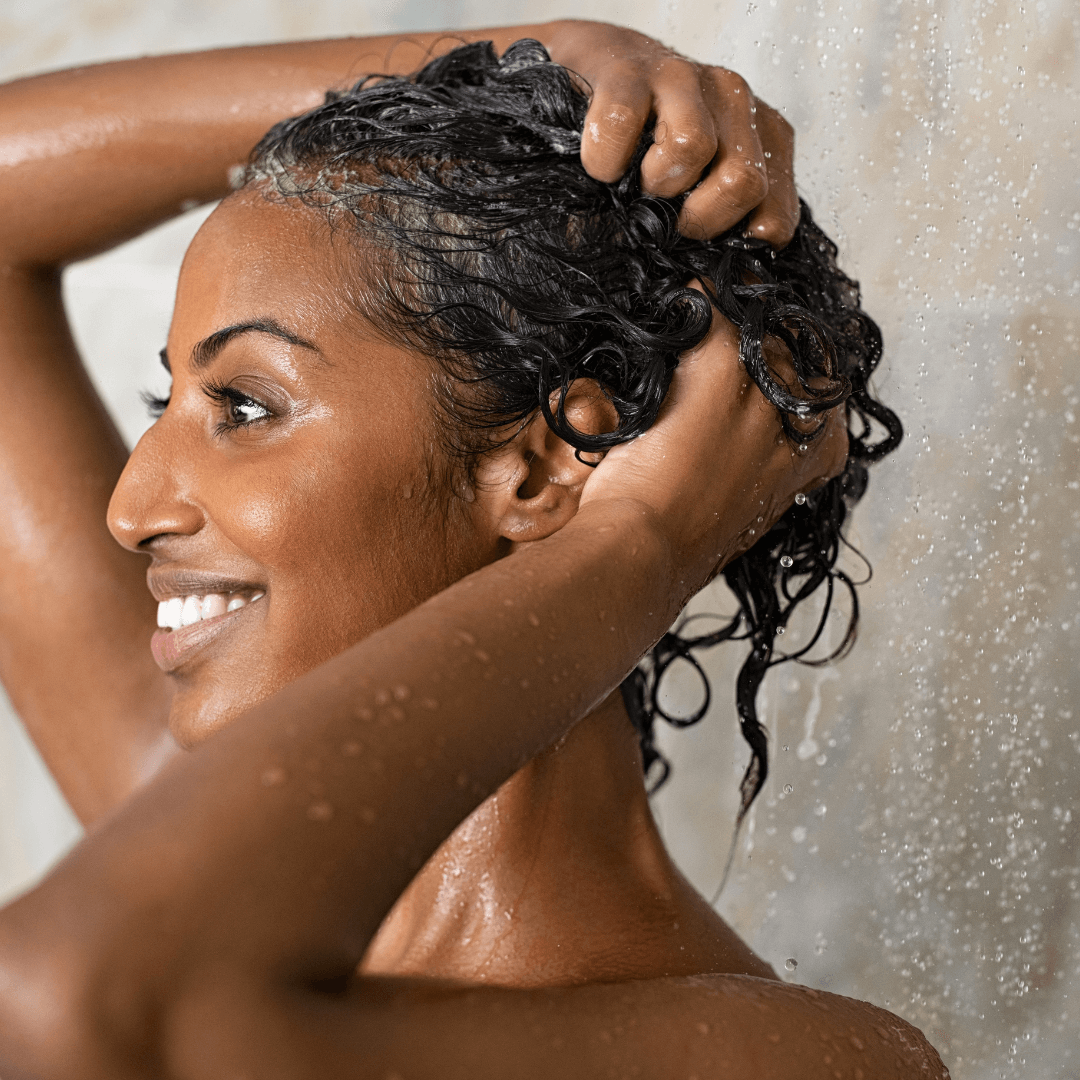
Moisturising and Hydrating Your 3C Hair
Regular Moisture Treatments
Incorporate leave-in conditioners and hydrating masks into your routine. Look for products specifically formulated for curly hair, as they tend to contain ingredients that deeply nourish curls without weighing them down.
Apply leave-in conditioners to damp hair after washing. This helps to lock in moisture and makes the hair more manageable.
Hydrating masks should be used once a week. Apply the mask evenly throughout your hair, focusing on the mid-lengths to the ends, and leave it on for the recommended time before rinsing.
Creating a Leave-In Moisturiser with LOHY Conditioner
Transforming your LOHY conditioner into a leave-in moisturiser is an excellent way to extend the benefits of your regular conditioner, providing ongoing hydration and nourishment to your hair throughout the day. This DIY approach is especially beneficial for those with curly or dry hair types that crave extra moisture. Here's how to create your own leave-in moisturiser:
Ingredients and Tools:
- LOHY Drench & Quench Conditioner: The base of your leave-in moisturiser.
- Distilled Water: To dilute the conditioner for a lighter consistency.
- HUSH Nourishing Oil (Optional): Add a couple of drops for extra nourishment
- Spray Bottle: For easy application.
- Measuring Cup and Spoon: For accurate measurements.
- Mixing Bowl and Whisk: For blending ingredients.
Steps to Create Your Leave-In Moisturiser:
Prepare the Mixture:
- Start with a clean and dry mixing bowl. Combine about one part LOHY conditioner with three parts distilled water. This ratio can be adjusted depending on how light you want your leave-in to be.
Add Optional Ingredients:
- If desired, add a few drops of HUSH Nourishing hair oil for extra moisture. Aloe vera gel can be included for its soothing properties. Essential oils can be added for their benefits and to give a pleasant scent to your mixture. Rosehip and Patchouli are particularly nice fragrances.
Mix Thoroughly:
- Use a whisk to mix all the ingredients until you achieve a consistent, lump-free mixture. ** If you’re time poor you can add ingredients to your spray bottle and shake vigorously. Ensure that the conditioner is well diluted and integrated with the water and other ingredients.
Transfer to a Spray Bottle:
- Carefully pour the mixture into a clean spray bottle. A funnel can be used to avoid spills.
Usage:
Shake well before each use. Spray a moderate amount onto wet or damp hair, focusing on mid-lengths to ends. Avoid the scalp to prevent greasiness.
Gently work it through with your fingers, Flexi Brush a comb to ensure even distribution.
- Storage:
- Store your homemade leave-in moisturiser in a cool, dry place. As it doesn’t contain preservatives, it's best used within a week or two.
Benefits:
- Customisation: You can tailor the leave-in to your specific hair needs by adjusting the concentration and adding ingredients that suit your hair type.
- Hydration: Continuous hydration throughout the day helps in keeping your hair soft and reducing frizz.
- Convenience: A spray application makes it easy to reapply as needed, especially useful for refreshing your curls.
Creating your own leave-in moisturiser using LOHY conditioner is not only cost-effective but also allows for customisation to suit your hair’s unique needs. It’s a simple, creative way to keep your hair hydrated and healthy-looking between washes.

Deep Conditioning Treatments
Deep conditioning is a critical component of the hair care regimen for Type 3C hair, which is often prone to dryness and frizz.
Here’s how to maximise your deep conditioning routine:
- Regular Deep Conditioning: Schedule a deep conditioning treatment every two weeks. This regularity helps maintain the right moisture-protein balance, essential for keeping your curls healthy, bouncy, and well-defined.
- Choosing the Right Product: Select a deep conditioner that caters to the needs of curly hair, we recommend LOHY’s Drench & Quench Moisture Mask.
- Application Process: After shampooing, apply the deep conditioner generously to your hair, focusing on the mid-lengths and ends where dryness is most prevalent. Use your flexi brush to ensure even distribution.
- Enhancing Penetration: For better absorption, cover your hair with a shower cap or microfibre towel. The heat generated helps the conditioner penetrate deeper into the hair shaft.
- Overnight Treatments: For extra hydration, consider leaving the deep conditioner in your hair overnight. This extended treatment can be particularly beneficial for very dry or damaged hair. Remember to cover your hair with a shower cap to avoid staining your pillow.
- Rinsing Out: Thoroughly rinse your hair with lukewarm water to remove all traces of the conditioner. This step is crucial to prevent any residue that could weigh your hair down or make it appear greasy.
- Frequency of Treatment: Adjust the frequency of deep conditioning based on your hair's response. If your hair starts to feel limp or overly soft, reduce the frequency, as this may indicate excess moisture.
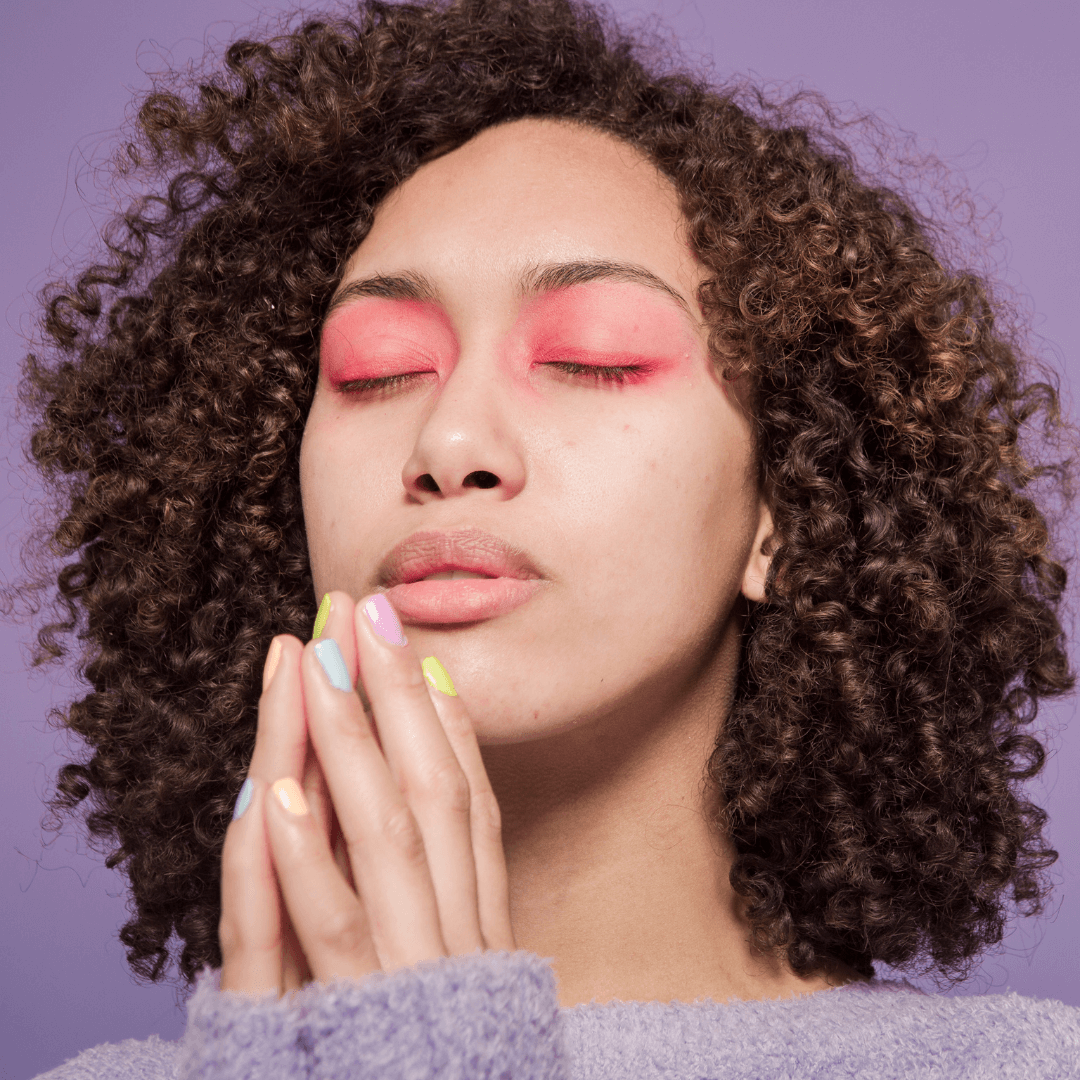
Using Oil on Type 3C Hair
Type 3C hair benefits from oils for added moisture. Oil can be used as a pre-styling treatment, or as a finishing oil for styled hair.
Here's how you can use this product effectively:
Using Hush Nourishing Oil for Moisture Sealing
- After washing and conditioning your hair, and while it is still damp, take a small amount of Hush Nourishing Oil in your palms. Focusing on the ends and mid-lengths, using the prayer hands technique, gently apply the oil to the tips of your hair. These areas are typically the driest and most prone to damage, so focusing on them helps to seal in moisture and reduce split ends. As Type 3C hair can be dense, use the oil sparingly to avoid weighing down your curls or making them appear greasy.
As a Pre-Styling Treatment
- Hush Nourishing Oil can also be used as a pre-styling treatment. After washing your hair, apply the oil to your mids and ends, then follow up with your usual styling products, such as curl creams or gels. Using the oil before styling helps in creating a protective layer around the hair shaft, making your hair more manageable and giving additional moisture, which is particularly beneficial for dense Type 3C hair.
Scrunching Out the Crunch
- Once your hair is dry and styled, particularly after using styling products that leave a "crunch," aka cast, you can use Hush Nourishing Oil to soften the hair.
- Technique: Rub a small amount of oil between your palms and gently scrunch your hair from the ends upwards. This action helps to break the hard cast created by some styling products, leaving your curls soft, bouncy, and naturally defined.
- This method not only adds extra nourishment but also imparts a healthy shine to your curls and helps control frizz.
By incorporating LOHY's Hush Nourishing Oil into your hair care and styling routine, you will enhance the overall appearance of your curls. Remember, a little goes a long way, so start with a small amount and adjust as needed for your hair’s specific needs.
Step-by-Step Styling for Your Type 3C Hair
1. Section Your Hair: Divide your hair into sections for easier product application.
2. Apply Styling Products: Use LOHY products evenly across each section, focusing on areas that need the most moisture.
We recommend applying Cruise Control as a primer, followed by either Chutzpah Volumising Foam for finer 3C curls hair, or for dense medium or thick 3C hair, Oomph or Pow strong hold gel.
3. Define Curls: Use your fingers or a wide-tooth comb to gently define the curls.
4. Dry Gently: Air dry or use a diffuser on a low heat setting to avoid disrupting the curl pattern.
Hot Tips: Caring For Your 3C Hair
- Avoid heat styling to prevent damage.
- Use a silk or satin pillowcase to reduce frizz and breakage.
- Detangle gently using your Flexi Brush or a wide-tooth comb when wet.
- Trim regularly to keep ends healthy.
- Stay hydrated and maintain a balanced diet.
- Protect your hair from harsh weather conditions. Including saltwater and chlorine.
- Limit washing to prevent stripping natural oils.
- Use a microfiber towel to dry your hair.
- Refresh your curls between washes with a water spritzer.
- Embrace and love your natural curls!
FAQs for Type 3C Hair
What is 3C hair type?
Tight, densely packed curls with a lot of volumes.
How often should you wash 3C hair?
About once or twice a week, depending on your lifestyle and hair needs.
Is 3C hair low porosity?
It can vary; perform the strand test to determine your hair's porosity.
How do I know if my hair is 3C or 4c?
3C curls are looser than 4C, which has a more tightly coiled pattern.
Does 3C hair get frizzy?
Yes, especially if not properly moisturised.
What oil is best for 3C hair?
Hush Nourishing Oil Of course! Lighter oils like argan or jojoba are also beneficial for 3C hair.
What does 3C natural hair look like?
It looks like tightly coiled, springy curls that are closely packed.
What hair type is the most frizzy?
This varies depending on care, but curly hair types like 3C can be prone to frizz.

